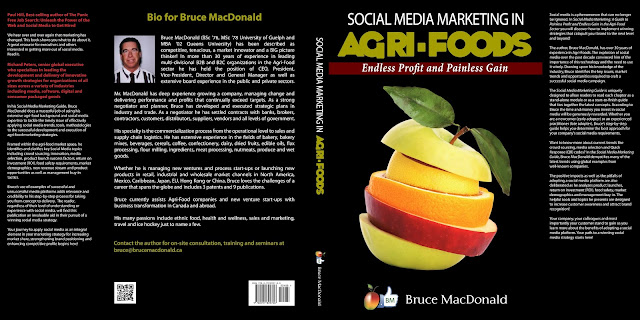BURSTING THE CARBONATION BUBBLE MYTH
Posted in News, Acid, Acidulants, Aroma, Beverages, Carbonated Beverages, Chemicals, Flavor,Fermentation, Food Chemistry, Mouthfeel, Ready-To-Drink (RTD) Beverages, Taste, Orafti
PHILADELPHIA—It’s the acid, not the bubbles that lend carbonated beverages the sensory “bite" associated with these drinks, according to a new study published in the journal Plos One. Researchers at Monell Chemical Senses Center, Philadelphia, PA, studying the role bubble play in carbonation bite said, “carbonation bite comes mainly from formation of carbonic acid in the oral mucosa," or in other words, we have pain receptors stimulated by carbon dioxide.
The published findings, resulting from two separate experiments, revealed part of the role bubbles play in carbonated beverages. While they might not contribute to the “bite," bubbles do add an extra dimension to the carbonated beverage experience through the light physical feel of the bubbles picked up by our sense of touch as the beverage flows around the tongue.
This second finding was a surprise to the researchers. As stated in the report, “Since innocuous sensations like light touch and cooling often suppress pain, we predicted that bubbles might reduce rated bite. Contrary to prediction, air bubbles flowing around the tongue significantly enhanced rated bite."
Carbonated beverages occur either naturally when carbon dioxide dissolves into a liquid under high pressure, in a fermented beverages like beer, or can be added to beverages during production, for example in soda.
Opening a bottle or can of a carbonated beverage reduces the pressure, releasing some of the carbon dioxide in the form of bubbles. After a sip, enzymes in the mouth convert the remaining free carbon dioxide into carbonic acid. The acid then activates sensory nerve endings, which signal the mild irritation that we refer to as “bite."
In the first experiment researchers took advantage of the fact that bubbles cannot form when atmospheric pressure is raised above a certain level. Twelve healthy adults were seated in a hyperbaric chamber and asked to rate the bite intensity of several concentrations of carbonated water. The ratings were collected once while under normal atmospheric pressure (with bubbles) and a second time at higher pressure (no bubbles), equivalent to diving to a depth of 33 feet in sea water.
There was no difference in the bite reported in the two conditions, even through bubbles are physically unable to form at the higher pressure.
Other research into bubbles reveals that the science of carbonated beverages is a complex interplay of olfactory receptors and sensory perception as for example, when drinking champagne. In that instance even bubble size plays a role as the bubbles pop on the surface of the glass and tiny droplets evaporate, releasing the beverage’s aroma to the consumer.
The published findings, resulting from two separate experiments, revealed part of the role bubbles play in carbonated beverages. While they might not contribute to the “bite," bubbles do add an extra dimension to the carbonated beverage experience through the light physical feel of the bubbles picked up by our sense of touch as the beverage flows around the tongue.
This second finding was a surprise to the researchers. As stated in the report, “Since innocuous sensations like light touch and cooling often suppress pain, we predicted that bubbles might reduce rated bite. Contrary to prediction, air bubbles flowing around the tongue significantly enhanced rated bite."
Carbonated beverages occur either naturally when carbon dioxide dissolves into a liquid under high pressure, in a fermented beverages like beer, or can be added to beverages during production, for example in soda.
Opening a bottle or can of a carbonated beverage reduces the pressure, releasing some of the carbon dioxide in the form of bubbles. After a sip, enzymes in the mouth convert the remaining free carbon dioxide into carbonic acid. The acid then activates sensory nerve endings, which signal the mild irritation that we refer to as “bite."
In the first experiment researchers took advantage of the fact that bubbles cannot form when atmospheric pressure is raised above a certain level. Twelve healthy adults were seated in a hyperbaric chamber and asked to rate the bite intensity of several concentrations of carbonated water. The ratings were collected once while under normal atmospheric pressure (with bubbles) and a second time at higher pressure (no bubbles), equivalent to diving to a depth of 33 feet in sea water.
There was no difference in the bite reported in the two conditions, even through bubbles are physically unable to form at the higher pressure.
Other research into bubbles reveals that the science of carbonated beverages is a complex interplay of olfactory receptors and sensory perception as for example, when drinking champagne. In that instance even bubble size plays a role as the bubbles pop on the surface of the glass and tiny droplets evaporate, releasing the beverage’s aroma to the consumer.
Check out my latest e-book entitled: "Social Media Marketing in Agri-Foods: Endless Profit and Painless Gain"
The book is available on Amazon and Kindle for $4.99 USD. Visit amazon/Kindle to order now:
http://www.amazon.ca/Social-Media-Marketing-Agri-Foods-ebook/dp/B00C42OB3E/ref=sr_1_1?s=digital-text&ie=UTF8&qid=1364756966&sr=1-1
Thanks for taking the time!


No comments:
Post a Comment